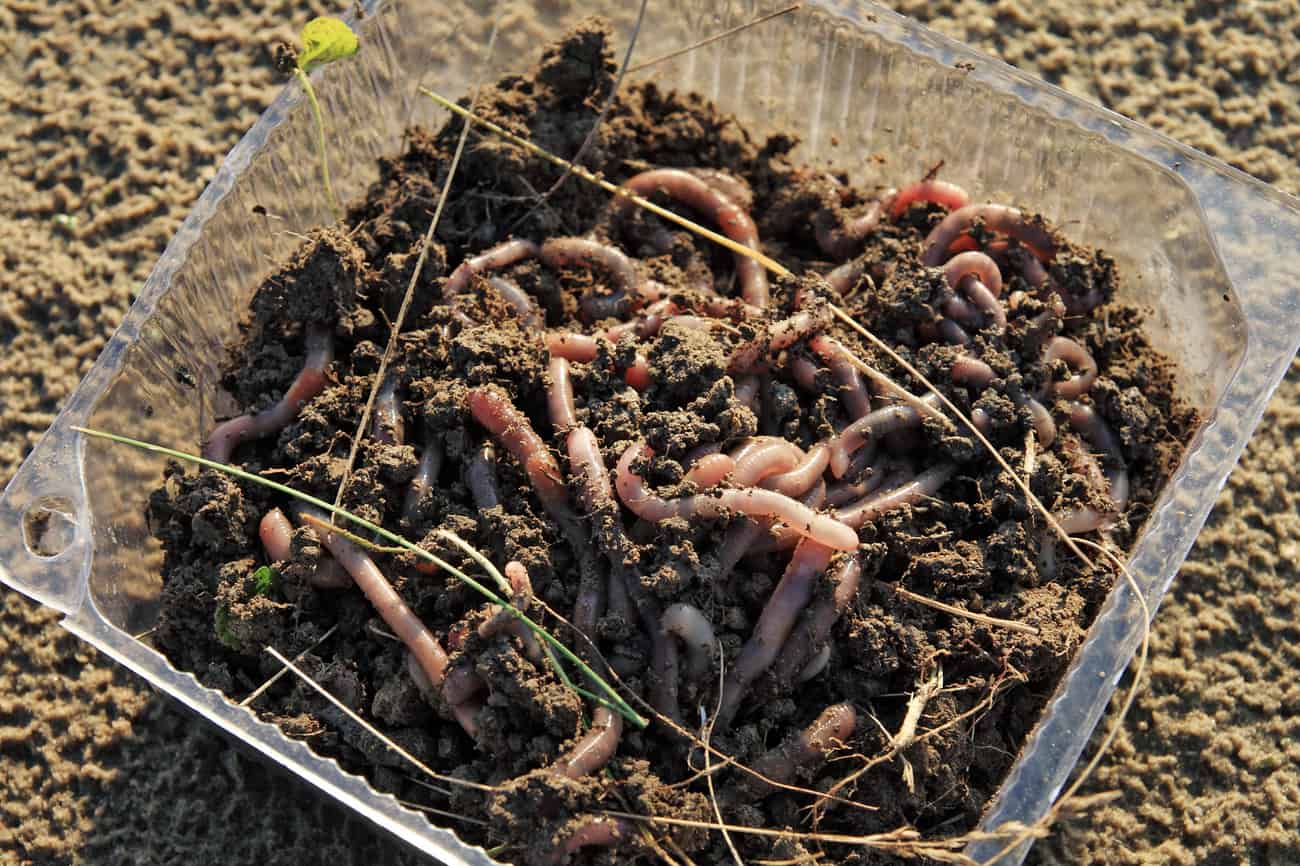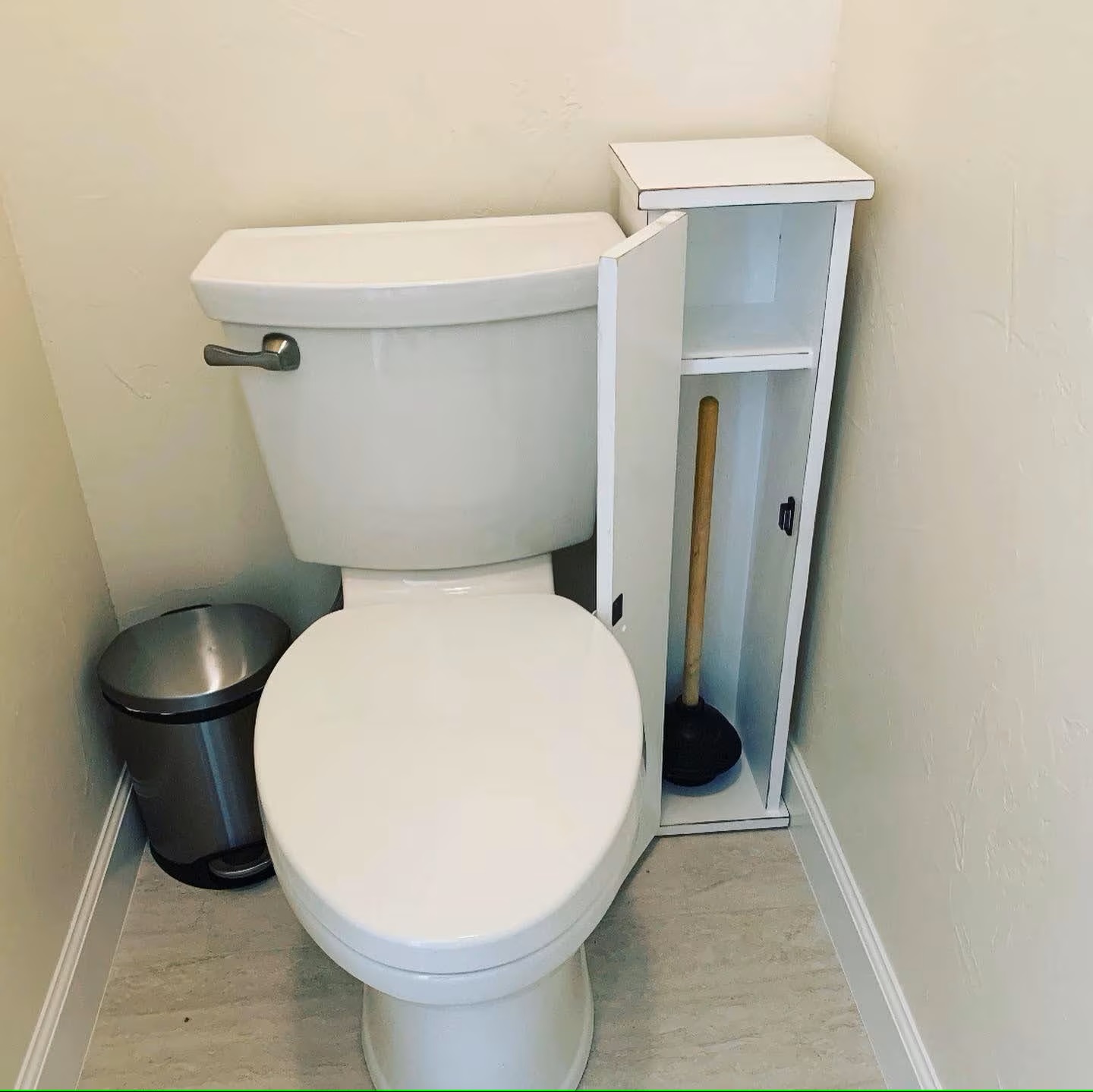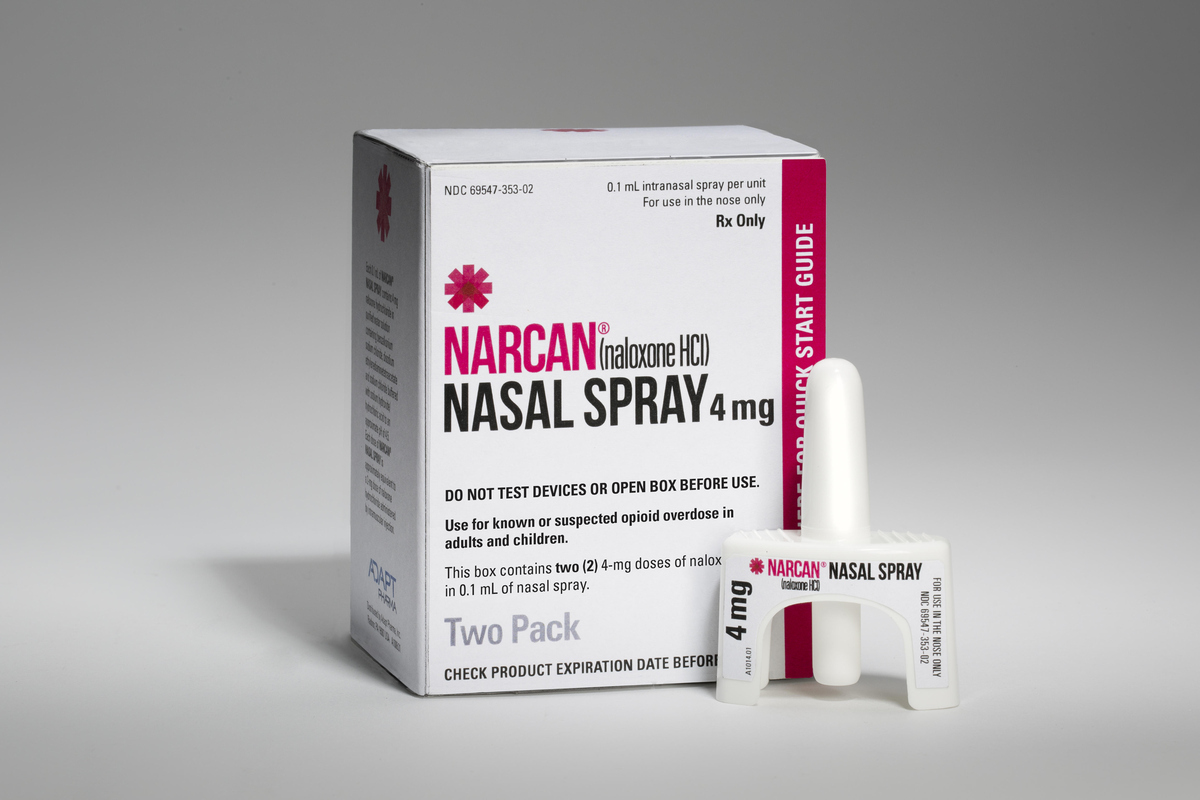

Articles
How To Store Nightcrawlers
Modified: January 19, 2024
Learn the best methods for storing nightcrawlers in this comprehensive guide. Discover the top articles and tips to keep your nightcrawlers healthy and ready for fishing.
(Many of the links in this article redirect to a specific reviewed product. Your purchase of these products through affiliate links helps to generate commission for Storables.com, at no extra cost. Learn more)
Introduction
Nightcrawlers, also known as earthworms, are a popular choice among fishing enthusiasts due to their effectiveness as bait. These night-loving creatures are renowned for their large size and lively movements, attracting a wide range of fish species. However, many anglers often face the challenge of properly storing nightcrawlers to maintain their freshness and vitality. In this article, we will explore the best practices for storing nightcrawlers to ensure they remain in optimal condition for your fishing trips.
Understanding the needs and behaviors of nightcrawlers is essential to providing them with the right environment for storage. Nightcrawlers are primarily nocturnal creatures that thrive in cool and damp conditions. They possess a high moisture content in their bodies and rely on moist environments to maintain their moisture balance. Additionally, nightcrawlers require oxygen to survive, and a lack of oxygen can quickly lead to their demise.
When it comes to storing nightcrawlers, the key is to recreate their natural habitat as closely as possible. This means providing them with the right container, creating the ideal environment, offering proper nutrition, and maintaining moisture levels. Moreover, it is crucial to avoid exposing nightcrawlers to harmful substances that could potentially harm or kill them.
In this comprehensive guide, we will delve into each of these aspects in detail, ensuring that you have all the necessary information to store nightcrawlers effectively. Whether you are an experienced angler or a beginner, these tips and techniques will help you keep your nightcrawlers healthy and lively, increasing your chances of success on your fishing expeditions.
So, let’s dive in and discover the best strategies for properly storing nightcrawlers to maximize their freshness and ensure a successful fishing trip every time.
Key Takeaways:
- Properly storing nightcrawlers involves creating a dark, moist, and well-ventilated environment to mimic their natural habitat. Choosing the right container, providing nutrition, and avoiding harmful substances are crucial for their health and vitality.
- Long-term storage of nightcrawlers requires regular maintenance, temperature control, and responsible feeding. By following these tips, anglers can ensure the worms remain healthy, active, and effective as bait for future fishing trips.
Read more: How To Store Store-Bought Bread
Understanding Nightcrawlers
Before diving into the specifics of storing nightcrawlers, it is important to understand these fascinating creatures. Nightcrawlers, scientifically known as Lumbricus terrestris, are a type of earthworm commonly found in soil across various regions of North America. These worms can grow up to 12 inches long and are renowned for their burrowing abilities, creating intricate tunnels beneath the ground.
Nightcrawlers exhibit a unique behavior known as geotaxis, which means they have a natural instinct to move away from light and towards darkness. This is why they are most active during the night and are commonly found surfacing on the ground after rainfall. This behavior makes them a prime target for anglers who use them as bait, as they are readily available and attract fish with their natural movements.
In terms of their physical characteristics, nightcrawlers have a cylindrical body divided into segments. These segments allow for flexibility and easy movement through the soil. They have a distinct clitellum, which is a raised band located near the head of the worm. Nightcrawlers also possess a mucus-covered outer skin that helps them glide smoothly through the soil while protecting them from drying out.
Nightcrawlers play a vital role in improving soil quality. They ingest organic matter found in the soil, such as decaying leaves and plant material, and in the process, break it down into smaller particles. This process, known as vermicomposting, enriches the soil by releasing essential nutrients and improving its overall structure.
When it comes to their reproductive cycle, nightcrawlers are hermaphrodites, meaning they possess both male and female reproductive organs. However, they still require a mate to reproduce. During mating, two nightcrawlers will line up facing opposite directions, exchanging sperm packets called spermatophores. After fertilization, the nightcrawler will lay eggs in a protective cocoon, which hatches after a few weeks.
It is important to note that nightcrawlers have specific requirements for their survival and well-being. These conditions include adequate moisture levels, proper nutrition, and an environment that mimics their natural habitat. By understanding these needs, we can create a storage system that ensures the longevity and vitality of the nightcrawlers, ultimately maximizing their effectiveness as bait.
Now that we have a better understanding of nightcrawlers and their characteristics, let’s move on to the next section and explore the best container options for storing them.
Choosing the Right Container
When it comes to storing nightcrawlers, choosing the right container is of utmost importance. The container should provide a suitable environment for the worms to thrive and should be easy to manage. Here are some factors to consider when selecting a container for storing nightcrawlers:
1. Size: Nightcrawlers require space to move around and breathe. Therefore, choose a container that is large enough to accommodate the number of worms you plan to store. A general rule of thumb is to provide at least one square foot of space per pound of worms.
2. Material: Nightcrawlers prefer dark and moist environments. Opt for a container made of opaque or dark-colored material to shield the worms from light exposure. Avoid transparent containers as they can cause stress to the worms.
3. Ventilation: While nightcrawlers need a moist environment, they also require oxygen to survive. Ensure that the container has sufficient ventilation to allow for proper air circulation. This can be achieved by drilling small holes in the lid or sides of the container.
4. Lid: A tightly fitting lid is essential to prevent the worms from escaping and to maintain the required moisture levels. Look for a container with a secure lid that can be closed tightly to minimize the risk of any accidental openings.
5. Easy Access: Consider a container that allows for easy access to the worms. This will make it more convenient to feed them, check on their well-being, and remove any dead worms as needed. Look for containers with an easy-to-open lid or even a hinged lid for seamless access.
6. Durability: Choose a container that is sturdy and durable. It should withstand any potential rough handling and be resistant to cracking or breaking. Nightcrawlers produce moisture, so ensure that the container is resistant to moisture damage to ensure longevity.
7. Stackability: If you are planning to store a large number of nightcrawlers, consider containers that are stackable. This will help save space and make it easier to manage multiple containers in a compact area.
When selecting a container, keep in mind that nightcrawlers prefer a slightly damp environment. Avoid using containers that are fully airtight, as this can trap excessive moisture and lead to suffocation or the growth of harmful bacteria. Allow for some airflow to prevent condensation buildup.
Now that you have a better understanding of the factors to consider when choosing the right container, let’s move on to the next section and discuss how to create the ideal environment for storing nightcrawlers.
Creating the Ideal Environment
To ensure the optimal storage of nightcrawlers, it is crucial to create an environment that closely mimics their natural habitat. This will help maintain their health and vitality throughout their storage period. Here are some key factors to consider when creating the ideal environment for nightcrawler storage:
1. Moisture Levels: Nightcrawlers require a moist environment to survive. Aim for a moisture content of around 70-80% in the bedding material. To achieve this, start by lining the container with a layer of dampened newspaper or cardboard. Alternatively, you can use peat moss or coconut coir as bedding materials that retain moisture well. Mist the bedding material regularly to ensure it remains moist but not overly wet.
2. Temperature: Nightcrawlers thrive in cool temperatures. Ideally, maintain a storage temperature between 40-50°F (4-10°C). Avoid exposing the worms to extreme temperatures, as this can negatively impact their health and well-being. If storing nightcrawlers indoors, choose a cool and dark location away from direct sunlight and heat sources.
3. Darkness: Nightcrawlers are naturally attracted to darkness and are sensitive to light. Ensure that the storage environment is dark to minimize stress on the worms. Opt for a container made of an opaque or dark-colored material to provide a dark and comforting space for the worms.
4. Bedding Material: Besides providing moisture, a suitable bedding material helps create a comfortable and nutritious environment for nightcrawlers. Consider using a mixture of organic matter such as compost, shredded leaves, or aged manure. These materials provide essential nutrients for the worms and create a favorable living environment.
5. Adequate Airflow: While nightcrawlers require moisture, they also need oxygen to survive. Ensure proper airflow within the container by providing ventilation through small holes in the lid or sides of the container. This allows for the exchange of gases and helps prevent the buildup of harmful gases.
6. Minimize Handling: Nightcrawlers are delicate creatures, and excessive handling can cause stress and harm to them. Minimize unnecessary disturbances and limit the frequency of handling the worms to avoid causing unnecessary stress.
By maintaining the ideal moisture levels, temperature, darkness, and airflow within the storage container, you can provide a comfortable and conducive environment for nightcrawlers. This will help them remain healthy and active, ready to be used as bait when you’re ready to fish.
In the next section, we will explore the importance of providing proper nutrition to nightcrawlers during their storage period to ensure their longevity and vitality.
Providing Proper Nutrition
While nightcrawlers can survive for a period without direct feeding, providing them with proper nutrition during their storage is essential for maintaining their health and vitality. Proper nutrition ensures that the worms have the necessary energy to thrive and remain active. Here are some key considerations for providing proper nutrition to stored nightcrawlers:
1. Organic Matter: Nightcrawlers are natural decomposers and derive their nutrition from organic matter in the soil. To provide a balanced diet, include organic materials in their bedding. This can include shredded leaves, vegetable scraps, or even a small amount of organic compost. These organic materials supply essential nutrients and microorganisms that aid in digestion.
2. Avoid Overfeeding: It is important not to overfeed nightcrawlers. Excess food can lead to the growth of harmful bacteria or fungi, negatively impacting the worms’ health. Monitor the amount of food provided and remove any uneaten food to prevent spoilage or the release of toxins.
3. Balanced Diet: Aim for a balanced diet that includes a variety of organic matter. This helps ensure that the nightcrawlers receive a sufficient amount of different nutrients. Mix different types of organic materials in the bedding to provide a well-rounded diet for the worms.
4. Calcium Source: Nightcrawlers require calcium for muscle function and reproduction. Include a calcium source in their diet, such as crushed eggshells or powdered limestone. Calcium helps maintain the worms’ overall health and ensures strong and healthy offspring.
5. Avoid Certain Foods: While nightcrawlers can consume a wide range of organic materials, there are certain foods to avoid. Avoid feeding them acidic or spicy foods, as these can be harmful to their digestive systems. Additionally, avoid feeding them meat or dairy products, as they can decompose rapidly and cause foul odors and bacteria growth.
6. Substrate Migration: Nightcrawlers have a natural behavior known as “substrate migration,” where they eat and process the bedding material. This behavior helps them acquire nutrients and break down organic matter. Therefore, ensure that the bedding material is nutritious and regularly replenish it as it gets consumed.
Remember that moderation is key when providing nutrition to stored nightcrawlers. Offer them a balanced diet, avoid overfeeding, and regularly monitor their health and behavior. By providing proper nutrition, you can ensure that the nightcrawlers remain healthy, active, and full of energy, ready to be used as bait when you’re ready to go fishing.
Next, we will explore the importance of maintaining moisture levels to keep nightcrawlers hydrated during storage.
Store nightcrawlers in a breathable container with damp soil or peat moss. Keep them in the refrigerator at 40-50°F to maintain their freshness. Avoid storing them in airtight containers or waterlogged soil.
Read more: How To Store Basil From Grocery Store
Maintaining Moisture Levels
Proper moisture levels are crucial for the well-being and survival of nightcrawlers during storage. Nightcrawlers have a high moisture content in their bodies, and maintaining adequate hydration is essential for their overall health and vitality. Here are some important tips for maintaining optimal moisture levels:
1. Moist Bedding: Start by ensuring that the bedding material in the storage container is moist but not overly wet. A good rule of thumb is to maintain a moisture content of around 70-80%. This can be achieved by misting the bedding material with water and regularly checking its moisture levels. Avoid using materials that retain too much water or are prone to becoming waterlogged.
2. Regular Mistings: Nightcrawlers rely on a moist environment for respiration through their skin. Monitor the moisture levels in the container and mist the bedding material as needed to maintain the desired moisture content. Be cautious not to over-mist, as excessive moisture can lead to oxygen deprivation or the growth of harmful bacteria and fungi.
3. Damp Towel Method: Another effective technique to maintain moisture levels is the damp towel method. Place a damp cloth or towel over the bedding material, ensuring that it touches the surface but is not dripping wet. This helps create a microclimate of moisture around the worms, preventing them from drying out.
4. Check for Condensation: Periodically check for condensation on the lid of the container. This is an indication of excessive moisture buildup, which can lead to an unsuitable environment for the nightcrawlers. If condensation occurs, remove the lid for a short period to allow for some airflow and moisture evaporation.
5. Water Source Separation: Avoid placing a direct water source, such as a container of water, inside the storage container. This can lead to flooding and drowning of the worms. Instead, focus on maintaining the moisture levels in the bedding material and relying on misting or the damp towel method for adequate hydration.
6. Monitor Evaporation Rates: The rate of moisture evaporation can vary depending on factors such as temperature and ventilation. Keep a close eye on the moisture levels in the container and adjust the frequency of misting accordingly. This will help ensure that the nightcrawlers have a consistently moist environment.
Remember that maintaining proper moisture levels is key to the health and well-being of the nightcrawlers during storage. Regularly monitor the moisture levels, be mindful of any signs of excessive dampness or dryness, and adjust the conditions as necessary. By providing the right amount of moisture, you can keep the nightcrawlers hydrated, active, and in optimal condition for your fishing needs.
In the next section, we will discuss how to avoid harmful substances that can be detrimental to the health of nightcrawlers during storage.
Avoiding Harmful Substances
Ensuring the health and well-being of nightcrawlers during storage requires avoiding harmful substances that can be detrimental to their survival. Nightcrawlers are sensitive creatures, and exposure to certain substances can be toxic or fatal. Here are some important considerations for avoiding harmful substances:
1. Pesticides and Chemicals: Nightcrawlers are highly susceptible to pesticides and other chemical-based substances. Avoid using pesticides or storing nightcrawlers in an environment exposed to chemical treatments. Pesticides can be absorbed through their skin or ingested while feeding, leading to illness or death. Use organic and pesticide-free gardening practices if collecting worms for storage.
2. Fertilizers: Fertilizers that contain harmful chemicals, such as high levels of nitrogen or phosphorus, can be harmful to nightcrawlers. These substances can cause burns or other negative effects on their delicate skin. Avoid storing nightcrawlers in areas where fertilizers have been heavily applied or in close proximity to areas treated with synthetic fertilizers.
3. Excessive Heat or Cold: Extreme temperatures, whether hot or cold, can be harmful to nightcrawlers. High temperatures can cause dehydration and stress, while freezing temperatures can lead to freezing and subsequent death. Avoid storing nightcrawlers in areas prone to temperature extremes, such as near heating or cooling sources.
4. Toxic Substances: Nightcrawlers are sensitive to various toxic substances, such as cleaning chemicals, gasoline, oil, or paint fumes. These substances can be absorbed through their skin or ingested if they come into contact with contaminated bedding or food. Store nightcrawlers in a location away from potential sources of toxic substances to ensure their well-being.
5. Medications and Supplements: Avoid storing nightcrawlers in an environment where medications or supplements are present. Some medications or supplements intended for human or animal use can be harmful to worms. Always ensure that the worms are not exposed to these substances, as they can have adverse effects on their health.
6. Contaminated Water: Nightcrawlers absorb water through their skin, making them susceptible to contaminants in the water. Ensure that the water used to mist the bedding material or provide moisture does not contain harmful substances such as chlorine, heavy metals, or pollutants. Use clean, filtered water when necessary.
By being cautious and avoiding exposure to harmful substances, you can ensure the continued health and well-being of stored nightcrawlers. Creating a toxin-free environment allows the worms to thrive and remain in optimal condition for their intended use as bait.
Next, we will dive into the topic of storing nightcrawlers long term to ensure their longevity and availability for future fishing trips.
Storing Nightcrawlers Long Term
If you plan to store nightcrawlers for an extended period, it’s important to ensure their longevity and vitality. Proper long-term storage techniques will help maintain the worms’ health and ensure they remain in optimal condition for future fishing trips. Here are some tips for storing nightcrawlers long term:
1. Bedding Maintenance: Regularly monitor the bedding material and replace it as needed. Over time, the bedding can become compacted or depleted of nutrients. Add fresh bedding material to maintain a suitable environment for the worms. This will also provide them with the necessary organic matter for nutrition.
2. Regular Check-ups: Periodically check on the stored nightcrawlers to ensure their well-being. Remove any dead or sick worms promptly to prevent the spread of disease and maintain a healthy environment. Inspect the bedding for any signs of mold, decay, or foul odors, and take appropriate action if needed.
3. Feed Responsibly: While nightcrawlers do not require frequent feeding during storage, occasional feeding with small amounts of organic materials can help maintain their health. Avoid overfeeding, as excess food can lead to bacterial growth and spoilage. Only provide enough food for the worms to consume within a day or two.
4. Temperature Control: Maintain a stable and cool temperature for long-term storage. Ideally, the storage temperature should be around 40-50°F (4-10°C). Avoid extreme temperature fluctuations, as these can stress the worms or even cause their demise. Consider using a temperature-controlled storage area or a basement as suitable options.
5. Low Light Environment: Nightcrawlers prefer darkness, so maintain a low light environment for long-term storage. Avoid exposing the worms to direct sunlight or bright artificial light, as this can cause stress and potentially harm them. Store the container in a dark, cool, and well-ventilated area to ensure the worms’ well-being.
6. Regular Moisture Check: Continuously monitor and maintain proper moisture levels within the storage container. Mist the bedding material as needed to ensure it remains moist but not overly wet. Be mindful of ventilation and airflow to prevent excessive moisture retention and the development of harmful conditions.
7. Periodic Aeration: While nightcrawlers require a moist environment, it is also important to provide occasional aeration to avoid excessive moisture and maintain proper airflow. Open the container for a short period every few days to allow for gas exchange and evaporation of excess moisture.
By following these long-term storage guidelines, you can ensure that your nightcrawlers remain healthy, active, and readily available for future fishing endeavors. With proper maintenance and care, your stored nightcrawlers will continue to serve as effective bait, enhancing your fishing success.
In the next section, we will provide additional tips for keeping nightcrawlers healthy during storage, maximizing their vitality for your fishing needs.
Tips for Keeping Nightcrawlers Healthy
Keeping nightcrawlers healthy during storage is essential for their longevity and effectiveness as bait. Here are some additional tips to ensure the well-being of your stored nightcrawlers:
1. Handle with Care: When handling nightcrawlers, always do so gently and avoid excessive handling. Rough handling can cause stress and physical harm to the worms, leading to injury or even death. Handle them with moist hands to prevent their slimy skin from drying out.
2. Avoid Overcrowding: Overcrowding can lead to increased competition for resources and stress among the nightcrawlers. Provide adequate space for the worms to move and breathe freely. Consider using multiple containers instead of cramming all the worms into a single container.
3. Keep them Separated: If storing different sizes or species of nightcrawlers, it is advisable to keep them in separate containers. This prevents larger worms from preying on smaller ones and ensures the optimal growth and health of each individual.
4. Regular Cleaning: Regularly clean the storage container and replace the bedding material. This helps prevent the buildup of waste, bacteria, and harmful substances. Cleaning also provides an opportunity to inspect the worms for any signs of disease or parasites.
5. Avoid Extreme Temperatures: Nightcrawlers are sensitive to extreme temperatures, both hot and cold. Keep the storage container in a cool location, away from direct sunlight or extreme fluctuations in temperature. Avoid exposing the container to freezing temperatures or excessive heat.
6. Monitor Air Quality: Ensure good air quality within the storage area to maintain the worms’ health. Do not store the container in areas with excessive fumes or chemicals, as these can be harmful to the worms. Adequate ventilation is crucial for the exchange of gases and prevention of harmful buildup.
7. Rotate Stock: If you regularly use nightcrawlers for fishing, it is beneficial to implement a rotation system. Use older and larger worms first, while keeping the smaller or younger ones for future use. This way, you ensure that all the worms get used within their peak vitality and avoid wastage.
8. Observe Regular Fishing Practices: When using stored nightcrawlers as bait, handle them with care and use proper fishing techniques. Avoid mishandling or leaving them exposed to the elements for extended periods. Return any unused or injured worms back to their storage container promptly.
By adhering to these tips, you can keep your nightcrawlers healthy and in optimal condition during storage. Following proper handling and care practices will help maximize their effectiveness as bait and ensure a successful fishing experience.
Now, let’s conclude our comprehensive guide on storing nightcrawlers and summarise the key points discussed.
Read more: How To Store Arrows
Conclusion
Properly storing nightcrawlers is crucial for maintaining their health, vitality, and effectiveness as bait. To ensure the long-term survival and well-being of these fascinating creatures, it is important to understand their needs and provide them with the optimum storage conditions.
Understanding nightcrawlers and their characteristics, such as their nocturnal behavior and reliance on moist environments, allows us to create the ideal storage environment. Choosing the right container, creating the ideal environment with suitable moisture levels, providing proper nutrition, and avoiding harmful substances are key factors to consider when storing nightcrawlers.
By choosing a container that provides adequate space, ventilation, and darkness, we create a comfortable habitat for the worms. Maintaining the ideal moisture levels through regular misting and the use of suitable bedding materials ensures their hydration and overall well-being. Offering a balanced diet of organic materials, avoiding overfeeding, and providing calcium sources contribute to their proper nutrition during storage.
Additionally, it is important to avoid harmful substances such as pesticides, fertilizers, and toxic chemicals that can harm the nightcrawlers. Maintaining a stable temperature, low-light environment, and proper airflow further contribute to their overall health and vitality.
Regular check-ups, bedding maintenance, and following responsible handling practices are important aspects of keeping nightcrawlers healthy during storage. By implementing these tips and techniques, we can maximize their longevity and effectiveness as bait for future fishing trips.
Remember to store nightcrawlers in a cool, dark, and well-ventilated area, monitor their moisture levels, and provide occasional aeration. Regularly clean their storage containers, handle them with care, and avoid overcrowding to ensure their well-being.
With proper storage techniques, your nightcrawlers will remain healthy, active, and ready to entice fish on your fishing adventures. Keep in mind the tips for keeping them healthy, and enjoy the thrill of successful fishing with lively and vibrant nightcrawlers by your side.
So, whether you’re an experienced angler or a novice enthusiast, following these guidelines will help you store nightcrawlers effectively and ensure an enjoyable and successful fishing experience every time. Happy fishing!
Frequently Asked Questions about How To Store Nightcrawlers
Was this page helpful?
At Storables.com, we guarantee accurate and reliable information. Our content, validated by Expert Board Contributors, is crafted following stringent Editorial Policies. We're committed to providing you with well-researched, expert-backed insights for all your informational needs.














0 thoughts on “How To Store Nightcrawlers”